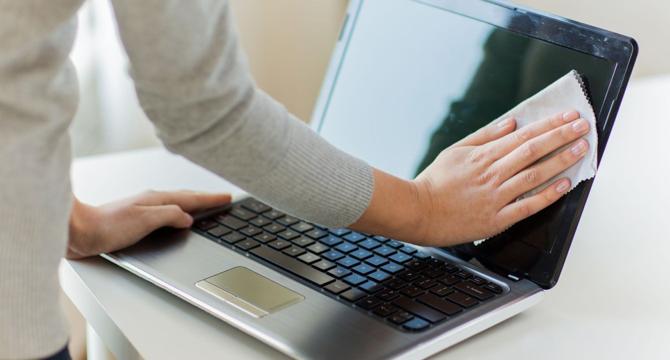Digitaltrends
1M
242

Image Credit: Digitaltrends
How to clean a laptop screen without scratching it
- Cleaning laptop screens is not intuitive, and it can attract dirt, grime, and dust. You don’t need special cleaning fluid to clean a laptop screen; you can just start with a microfiber cloth. For dirt and grime, use a damp sponge instead of rubbing with your microfiber cloth. You must avoid standard tap water as unseen minerals can scratch the display. If you want to use a cleaning screen-spray, avoid chemicals that scratch the surface, and be sure to pour or spray cleaning fluid onto a microfiber cloth. If you eat or drink while working, it can leave bits of your food on the screen, and you should, therefore, clean your laptop. After following these steps, your laptop will look less homely and a little cleaner.
- Use microfiber cloths designed for removing dust and debris without producing lint or scratching delicate surfaces. Turn off your laptop before wiping the screen in one direction gently. Dampen the sponge with distilled or filtered water and gently wipe the affected area with the laptop off and unplugged until it dries out before closing the lid.
- Cleaning solutions for oils and sticky residue need to be selected carefully to avoid damaging the screen when applied. Chemicals such as ethanol acid, ammonia, and toluene scratch the surface, so sellers mustn't include them when purchasing third-party screen cleaning sprays.
- The best screen-cleaning spray is through making one using 50% distilled water and 50% white vinegar, 50% distilled water and 50% isopropyl alcohol, or 100% distilled water and a drop of dish detergent. Do not pour or spray cleaning fluid directly onto the screen. Turn off the laptop, unplug it, and remove the battery if possible.
- Pour or spray your chosen cleaning fluid onto a microfiber cloth and gently rub the cloth in small circles. Do not apply too much pressure, which could displace the liquid crystal molecules and distort the screen. Once the screen is entirely free of moisture, air dry it for half an hour as an additional precaution.
Read Full Article
14 Likes
For uninterrupted reading, download the app